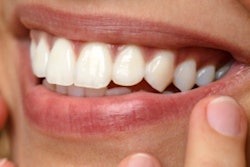
Working adults got less dental care and a growing number of adults said they couldn't afford needed dental treatment from 2000 to 2010, according to new ADA research. But more children and adults now get dental care through Medicaid, and access to dental care for the elderly is steadily increasing, the studies show.
The ADA Health Policy Resources Center on October 16 released three research briefs that analyzed dental care utilization, financial barriers to dental care, and the expansion of dental benefits for children from 2000 to 2011. The studies used data from the Medical Expenditure Panel Survey that is managed by the U.S. Agency for Healthcare Research and Quality (AHRQ).
Dental care utilization
Access to dental care continued to decline among working-age adults during the last decade, regardless of their income levels or whether they had dental insurance, according to the report on dental care utilization, which was based on people who had annual dental visits. However, the number of children who saw a dentist grew considerably, mainly through government programs such as Medicaid and the State Children's Health Insurance Program (SCHIP). And a steadily increasing number of the elderly are getting dental care, primarily through private dental insurance.
Percentage of the population with a dental visit in the year, 2000-2011
"Dentistry is at a crossroads," noted study researchers Kamyar Nasseh, PhD, and Marko Vujicic, PhD. Changes in dental practices, including the growth of dental service organizations and increased student debt will be "major forces bringing significant change to the profession," they pointed out.
From 2000 through 2010, dental care utilization steadily declined among working-age adults (ages 19 to 64), the percentage of people with private dental insurance has declined, and adult dental benefits through state Medicaid programs have eroded, according to the report.
While the Patient Protection and Affordable Care Act (ACA) will expand dental benefits for children, it will not address access-to-care issues, particularly among young adults, the study authors noted.
Dental care for working-age adults peaked at 41% in 2003, but fell to 36.1% in 2011. However, among the elderly (ages 65 and older), dental care increased from 38.3% in 2000 to 42.4% in 2011.
The report had mixed news for children's dental care. On a positive note, the number of poor children who had an annual dental visit has increased substantially (26.5% in 2000 to 34.8% in 2011). And the number of children who got dental care through federal and state programs grew from 30.6% in 2000 to 38% in 2011. However, dental care for uninsured children dropped significantly (31.5% in 2003 to 25.2% in 2011), while the number of children with private dental insurance grew to 56.8% in 2011.
Poor working-age adults suffered the biggest decline in access to dental care, which dropped to 19.3% in 2011 from 22.8% in 2000.
“Despite the gains made by children and the elderly ... more needs to be done to provide access to dental care among working-age adults, particularly the poor.”
report
"We found that dental care utilization has continued to decline among working adults, a worrying trend that has been driven by declines in utilization among those with both private and public dental benefits," the researchers noted. Public dental benefits have slowly eroded in state Medicaid programs, and fewer adults have private dental insurance, they pointed out.
Dental care among the elderly increased significantly from 2000 through 2011, driven primarily by people with private dental insurance. Also, spending on dental care by the elderly went up during the period, the researchers found.
"Despite the gains made by children and the elderly over the last decade, more needs to be done to provide access to dental care among working-age adults, particularly the poor," the study authors concluded.
The ACA will likely have a limited impact on adult dental care, although the law does expand benefits for children, they stated.
The states could help increase access to dental care for working-age adults by expanding Medicaid dental benefits, increasing dental reimbursements, and streamlining the administrative processes, according to the report.
Dental benefits
The dental benefits landscape has changed significantly in the U.S. among all ages since 2000, according to the second report on benefits, also by Nasseh and Vujicic. From 2000 through 2010, the number of people with private dental insurance declined and adult dental benefits as state Medicaid programs eroded.
The ACA will allow more children to have access to dental benefits through employer-sponsored insurance, state insurance exchanges, and Medicaid. "Dental benefits are a crucial factor enabling access to dental care and good oral health," study authors noted.
People with private dental insurance are more than twice as likely to have an annual dental exam compared to those without benefits, according to the report.
Dental benefits for adults in Medicaid programs vary considerably by state and population. Dental benefits are mandatory for children under both Medicaid and the SCHIP but are optional for adults.
As of December 2012, the researchers found the following adult Medicaid benefits offered by state:
- Extensive adult Medicaid dental benefits: Only 11 states (Alaska, Connecticut, Iowa, New Mexico, New York, North Carolina, North Dakota, Ohio, Oregon, Rhode Island, and Wisconsin)
- Limited adult Medicaid dental benefits: 14 states (Arkansas, Indiana, Kentucky, Louisiana, Massachusetts, Michigan, Minnesota, Nebraska, New Jersey, Pennsylvania, South Dakota, Virginia, Vermont, and Wyoming) and the District of Columbia
- Emergency-only adult dental benefits in Medicaid: 17 states (Arizona, Colorado, Florida, Georgia, Hawaii, Idaho, Illinois, Kansas, Maine, Mississippi, Missouri, Montana, New Hampshire, South Carolina, Texas, Washington, and West Virginia)
- No adult Medicaid dental benefits: Eight states (Alabama, California, Delaware, Maryland, Nevada, Oklahoma, Tennessee, and Utah)
In 2000, 57.8% of children had private dental insurance, 20.5% had public benefits, and 21.7% had no dental benefits. The report showed that by 2011, many parents lost jobs in the recession that provided dental coverage for their families. As a result, the percentage of children with private dental benefits dropped to 49%, while the percentage with public benefits such as SCHIP and Medicaid rose to 36.8%.
Despite the drop in the percentage of children with private dental benefits, the good news is that the overall percentage of children with dental benefits rose from 2000 through 2011, and the rate of uninsured children dropped to 14.2%.
On the other hand, a significant number of working-age adults lost dental insurance during the last decade, as the percentage with private insurance dropped from 61% in 2000 to 56.2% in 2011, the report noted. And the percentage of adults with public benefits such as Medicaid rose from 6.5% to 10%, and the uninsured rate grew from 32% to 33.7% from 2001 to 2011.
The report authors noted that many adults will have no dental benefits since many states don't provide adult dental benefits in their Medicaid programs.
The benefits report did have some good news: There was a notable rise in the percentage of young adults (ages 19 to 34) with private dental insurance from 2010 (50.8%) to 2011 (52.5%).
Financial barriers to dental care
The percentage of the population who cited cost as a barrier to accessing dental care increased from 2000 to 2010, but the number has fallen in the last couple of years, the third report found.
The percentage of people who cited cost as a barrier for dental care increased from 8.1% in 2000 to 13.5% in 2010, followed by a decline to 11.5% in 2012. Most of those who said cost was a barrier were adults ages 21 to 64.
Among children ages 2 to 20, the percentage who couldn't afford dental care was relatively steady from 2000 to 2010, but fell from 2010 to 2012, the report stated.
While financial barriers increased among all income groups from 2000 to 2010, the largest increases were among the poor. Compared with adults with high incomes, adults in lower income groups were two to three times more likely to report cost as a barrier to dental care, noted the study authors Thomas Wall, Nasseh, and Vujicic.
Low-income adults reported the highest level of cost as a barrier, a reflection of a corresponding erosion in dental benefits among this group during the same period. But cost considerations fell between 2010 and 2012, possibly due to the economic recovery, a flattening of dental care costs, as well as recent increases in public health insurance coverage, according to the report.
While the majority of people said they were getting the dental care they wanted in 1994, a significant number (8.5%) reported that they could not get oral care, according to the National Access to Care Survey. In contrast, only 5.6% said they had unmet medical or surgical wants.
The reasons given by people with unmet dental care wants included the following:
- 52.5% could not afford care.
- 15.1% had no insurance.
- 12.7% had difficulty getting to appointments.
- 3.9% had dentists who did not take insurance.
- 15.8% cited other reasons.
The ADA report on financial barriers to dental care used National Health Interview Survey (NHIS) data from 2000 to 2012, using a 2012 survey of 42,366 households, which yielded 108,131 people in 43,345 families.
The ADA compared unmet needs due to cost for dental care and three other categories of healthcare products and services: mental health services, prescription drugs, and eyeglasses. The survey asked people if they needed dental care (including checkups) during the past year but didn't get it because they couldn't afford it.
Percentage of the population who needed but did not obtain select health services during the previous 12 months due to cost as a barrier
The report also noted that cost barriers for dental care remain high relative to other healthcare services. But the researchers noted that from 2010 to 2012, dental care prices, as measured by the dental consumer price index (CPI), not only grew at a lower rate than other healthcare services, but they also failed to keep up with the rate of general inflation.
Annual price inflation for all consumer goods and select healthcare services, 2000-2012
 Source: Bureau of Labor Statistics. Notes: Annual inflation rate is calculated as compound annual growth rate of price
Source: Bureau of Labor Statistics. Notes: Annual inflation rate is calculated as compound annual growth rate of priceindex. U.S. city average index used for all categories of consumer goods and healthcare services.
"We believe that it is very likely that flattening dental prices played an important role in the decline in the percentage of individuals that reported cost as a barrier to dental care," the researchers wrote.
Since private dental benefits are closely tied with employment, the slowly improving labor market also could have played a role in lowering the percentage of adults that reported a barrier to dental care due to cost, the report stated.
Policy changes at the national level in the last few years may have helped decrease cost barriers, according to the researchers. The ACA's Maintenance of Effort (MOE) provisions, which end for adults in 2014 and for children in 2019, helped preserve ongoing coverage in Medicaid and SCHIP, the report stated. The policy change could have helped stabilize the percentage of adults and children with financial barriers to dental care. The ACA also mandates that young adults can stay on their parents' healthcare plan until age 26.
As the number of people who can't afford needed dental care has risen during the last decade, many are turning to hospital emergency rooms (ER) for serious oral problems.
"The deterioration in private and public dental benefits coverage for young adults during the 2000s created significant financial barriers to dental care, which led to a substitution of dental ER visits for dental office visits," the study authors wrote.
Recent research shows that the expansion of adult dental benefits in Medicaid increases utilization of dental services, they noted. The states still have the opportunity to expand dental benefits for adults, either through Medicaid or their health insurance exchanges policies, the study added.
But the situation for children has improved as a growing number have public dental insurance such as Medicaid and SCHIP.
"It appears that the public safety net for children was resilient to the external economic environment over this period," researchers wrote.
"Despite the positive progress since 2010, significant challenges remain in ensuring that all adults, particularly low-income adults, have access to dental benefits and, ultimately, routine dental care that helps them achieve optimal oral health," the report authors concluded.



















